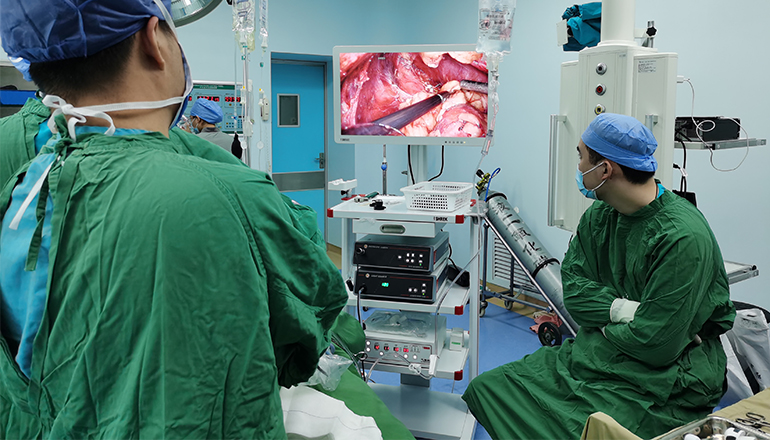- Shanghai, China
- [email protected]
- +86-21-58189111
Laparoscopic surgery, also known as minimally invasive surgery, is a surgical technique that utilizes a specialized endoscope to perform surgical procedures with minimal incisions. This approach provides several benefits, such as reduced postoperative pain, shorter hospital stays, and faster recovery times. In order to perform laparoscopic surgery, specific endoscopic equipment is required.
The primary equipment used in laparoscopic surgery is the laparoscope. A laparoscope is a long, thin, flexible tube that contains a camera and light source, which allows the surgeon to see inside the patient's body. The camera provides a high-definition video feed to a monitor, which enables the surgeon to see the surgical field in great detail. There are different types of laparoscopes, including telescopic laparoscopes, which have a single lens, and fiberoptic laparoscopes, which use a bundle of optical fibers to transmit the image.
Another essential piece of equipment for laparoscopic surgery is the insufflator. The insufflator is responsible for pumping gas into the patient's abdomen to create a space for the surgeon to work in. Carbon dioxide gas is commonly used for this purpose because it is non-toxic and can be easily absorbed by the body.
To manipulate organs and tissues during laparoscopic surgery, specialized instruments are required. These instruments are designed to fit through small incisions and include graspers, dissectors, scissors, and needle holders. They are typically long and thin, and their movements are controlled by the surgeon through handles outside the patient's body. Many laparoscopic instruments are also available in articulated or rotatable versions, which allow the surgeon to maneuver around organs and other obstacles in the surgical field.

Other equipment used in laparoscopic surgery includes the electrocautery device, which is used to cut and seal blood vessels, and the suction/irrigation device, which is used to remove excess fluid and debris from the surgical site.
In addition to the primary equipment, laparoscopic surgery also requires a range of ancillary equipment, such as monitors, video processors, and light sources. These devices provide the necessary illumination and video feed for the surgical team to visualize the surgical field and perform the procedure safely and effectively.
Additionally, laparoscopic surgery requires specialized trocars, which are used to create small incisions in the patient's abdomen to allow access for the laparoscope and other instruments. Trocars are available in a range of sizes and shapes, depending on the specific needs of the procedure.
Another critical piece of equipment used in laparoscopic surgery is the patient positioning system. These systems are designed to ensure the patient is in the proper position for the procedure, which is crucial for accessing the surgical site and ensuring the surgeon can work comfortably and safely.
Finally, laparoscopic surgery requires specialized surgical tables, which are designed to provide stable support for the patient and allow for easy positioning during the procedure. These tables are adjustable and can be manipulated to provide the best possible access to the surgical site.
In summary, laparoscopic surgery requires a range of specialized endoscopic equipment, including the laparoscope, insufflator, specialized instruments, electrocautery device, suction/irrigation device, trocars, patient positioning systems, and surgical tables. Each of these devices plays a critical role in ensuring safe and effective laparoscopic surgery, and their availability and proper use are essential for achieving optimal outcomes for patients.
Leave a Comments